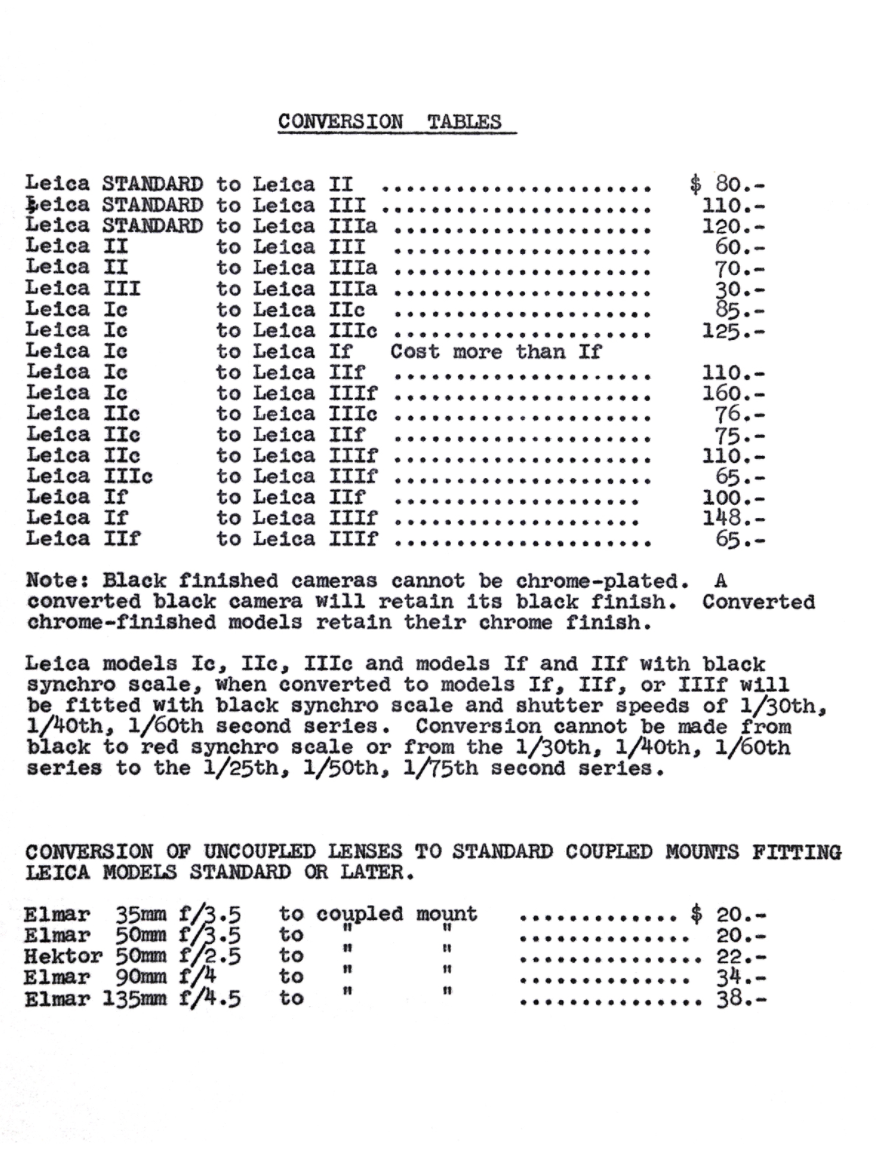Leica Serial Numbers: The Holy Grail of Camera Identification
The numerical digits on your Leica can establish your camera’s provenance, and a lot more...
Keeping meticulous production records has been an integral part of the corporate culture of E. Leitz, Wetzlar and Leica Camera from the very beginning. Indeed, one of its greatest accomplishments is the comprehensive sequential list of serial numbers, models, and dates that allows Leica fans, collectors, and historians to identify virtually any genuine Leica with a high degree of certainty. If you’re not impressed with Leica’s almost compulsive (Germanic?) dedication to order in creating its widely published serial number list, consider for example, Canon. Compared to Leica’s the serial number list of that great Japanese camera company can charitably be described as chaotic and discontinuous, so it’s often difficult to identify, say, a Canon rangefinder 35 of the ‘50s or ‘60s conclusively without assessing its features. However as with most great things, the Leica serial number list is not perfect, especially if you check it against the actual handwritten delivery records as Leica historians are wont to do.
According to acclaimed Leica historian James Lager, “Regarding the serial numbers entered into the delivery records, the work is very carefully done and precise. However, there are entries where the penmanship varies from unreadable to perfect, usually done by hand in ink by different writers. Many 1944 entries are unreadable, chaotic, and perhaps, given the dire circumstances in Germany at the time, were entered under duress. The persons writing them may not have been fully trained or familiar with process. If one identifies a Leica by serial number in the deliver records only, the entered number may not match the camera in hand.”
Another possible sources of serial number discrepancies were the so-called “UMBAU,” or factory upgraded, Leicas. This amazing service (see price schedules attached) was emblematic of Leica’s dedication to its customers and probably generated little, if any, extra revenue.
During the 1930s especially, but also right after the War, many Leica cameras were upgraded to later models. In other words, the serial number indicates it's a Leica I (model A) but the camera has a built-in rangefinder, a slow shutter speed dial on the front, and neck strap lugs. Ergo, it’s now a model III, thus the confusion. However, when E. Leitz Wetzlar added a newly engraved top to a post-War “UMBAU” Leica they retained the original serial number, but also added the letters DBP, which stands for 'Deusches Bundes-Patent', German Federal Patent. This acronym replaced the older DRP, 'Deutsches Reichs-Patent', after the German Federal Republic was established in 1949. One of the cameras included here, Leica serial number 150, began life as an ultra-rare Leica I (Model A) with 50mm f/3.5 Leitz Anastigmat lens and us now a gorgeous black finished Leica IIIa UMBAU—still a rare and valuable collector’s item but probably worth a lot less after the conversion.
Another wonderful thing about the great Leica serial number list is that it lets you spot fakes pretty easily. For example, if some nefarious fraudster has engraved an Fl. (Flieger) number on the top and added the words Luftwaffen Eigentum (property of the Air Force) to the back covering of a genuine but ordinary Leica IIIc to try to fob it off at an inflated price as a Luftwaffe Leica (this has actually happened!) a quick check of the serial number and the shipping records will reveal the deception.
What about all those zillions of USSR-made Feds and Zorkis bearing nicely engraved Leica logos, and fitted with collapsible 50mm f/3.5 Industar lenses masquerading as E. Leitz Wetzlar 50mm f/3.5 Elmars? Well, you can easily tell that they’re not genuine Leica II’s by carefully examining little details like their top shutter speed dial engravings, lack of a real leather covering, etc., but the clincher is the serial numbers, which are fanciful to say the least. The example shown here in nicely distressed gold, bears the serial number 0547, which would theoretically make it a Leica I (model A) of 1925—except that Leitz never added a zero preceding the actual serial number; it would have been engraved “No. 547!” As James Lager quipped, “I think the Russians must have engraved the serial numbers on all those fake Leicas after a week-long vodka party.” There may well be more truth than sarcasm in that statement, but we’ll never know.
The bottom line: Always ask for the serial number when purchasing or evaluating any Leica and always get clear photos so you can see what you really have. And even after passing over those hurdles, do as the Romans wisely advised: caveat emptor.







